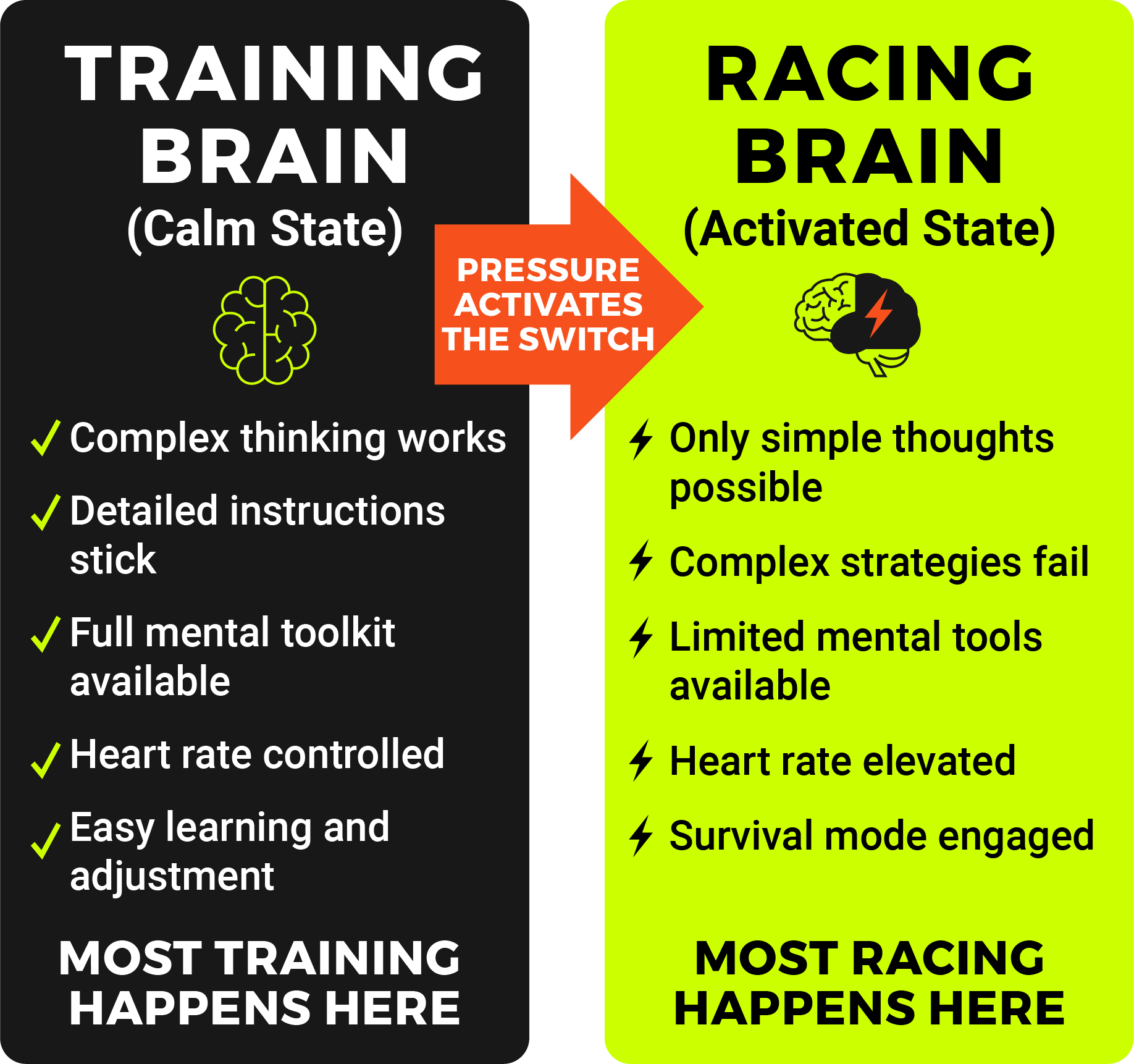Learning the difference between the training versus racing brain helped me strategize and overcome the challenges of racing.

The biggest takeaway was learning to focus on just one or two things during a race, keep stress low, and prepare in the way that works best for me